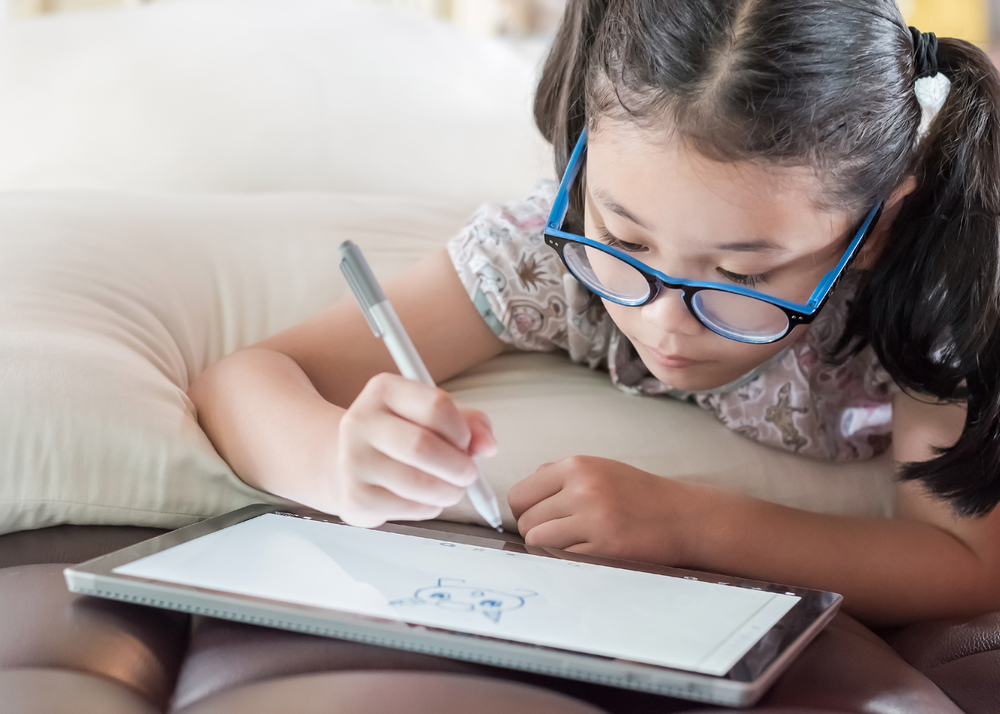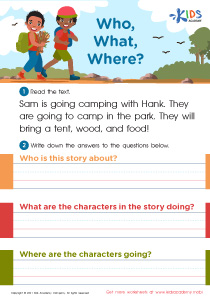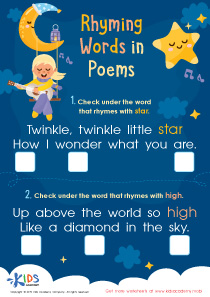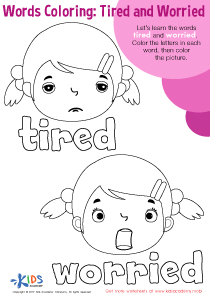Visual Perception Skills Reading Worksheets for 6-Year-Olds
4 filtered results
-
From - To
Enhance your child's reading abilities with our engaging Visual Perception Skills Reading Worksheets for 6-Year-Olds. Designed to support early learners, these worksheets boost essential skills like letter recognition, sequencing, and pattern identification. Through delightful activities and colorful visuals, children can improve their focus, memory, and understanding of written language. Perfect for both classroom and home use, our worksheets are suited to accommodate diverse learning styles. Help your 6-year-old build a strong foundation in reading with these expertly crafted resources, ensuring they progress confidently and enjoyably in their educational journey.
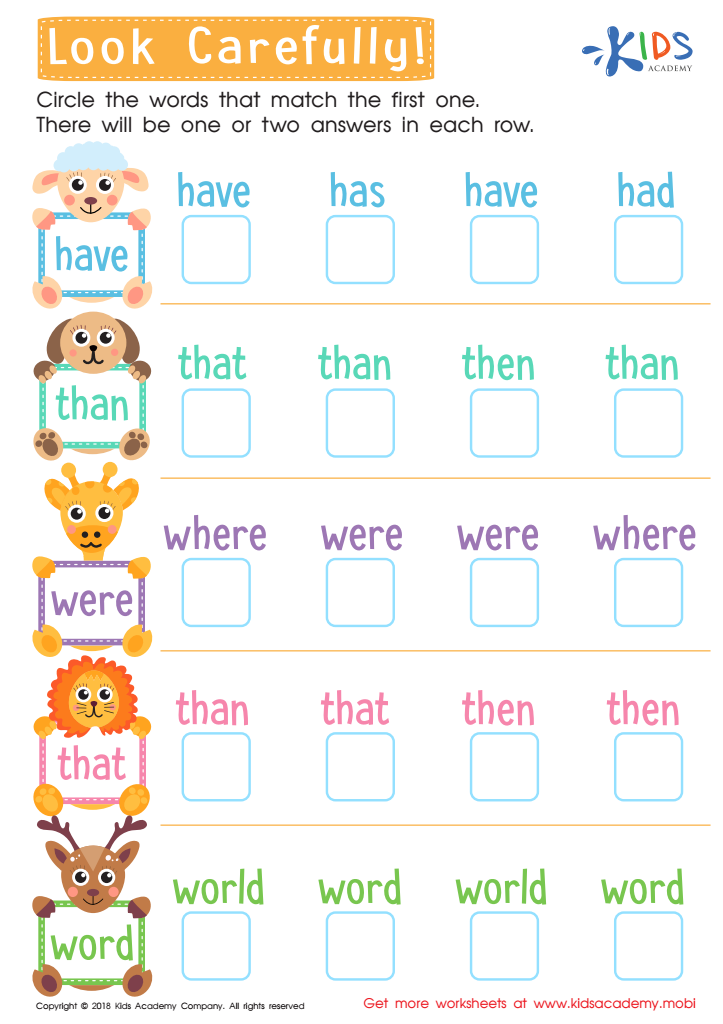

Look Carefully Worksheet
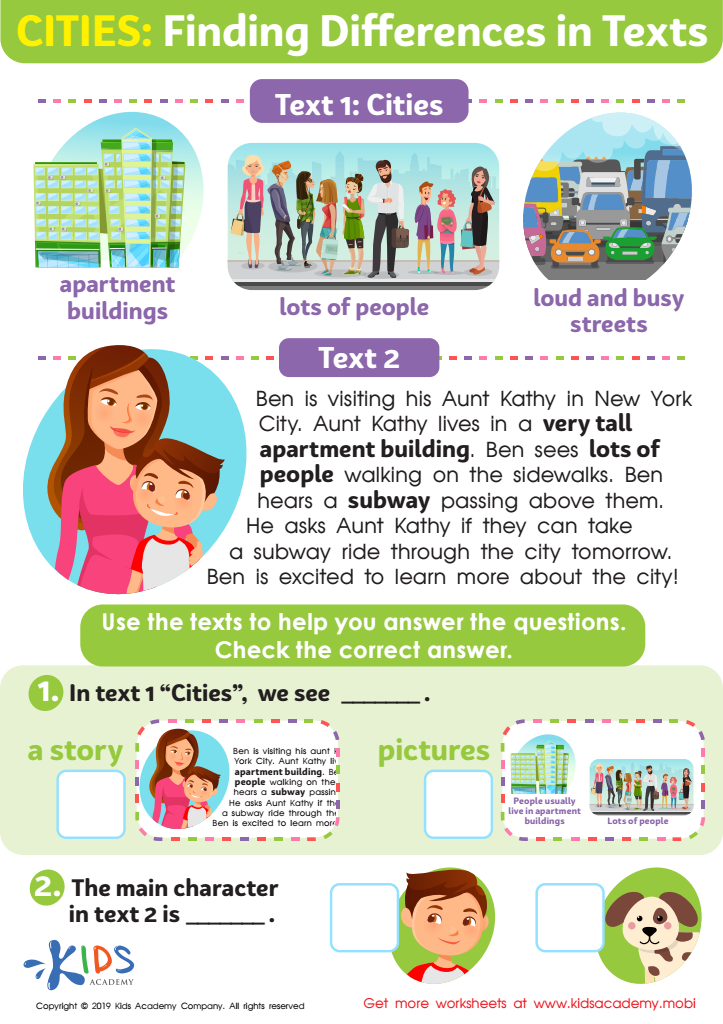

Cities: Finding Differences Worksheet
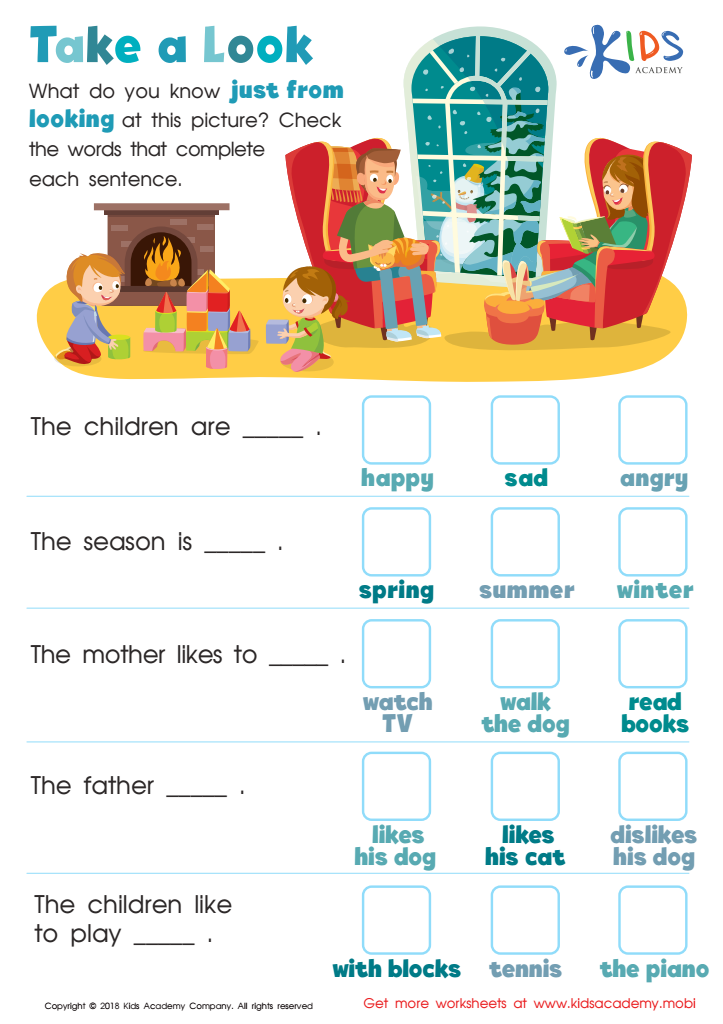

Take a Look - Part 1 Worksheet
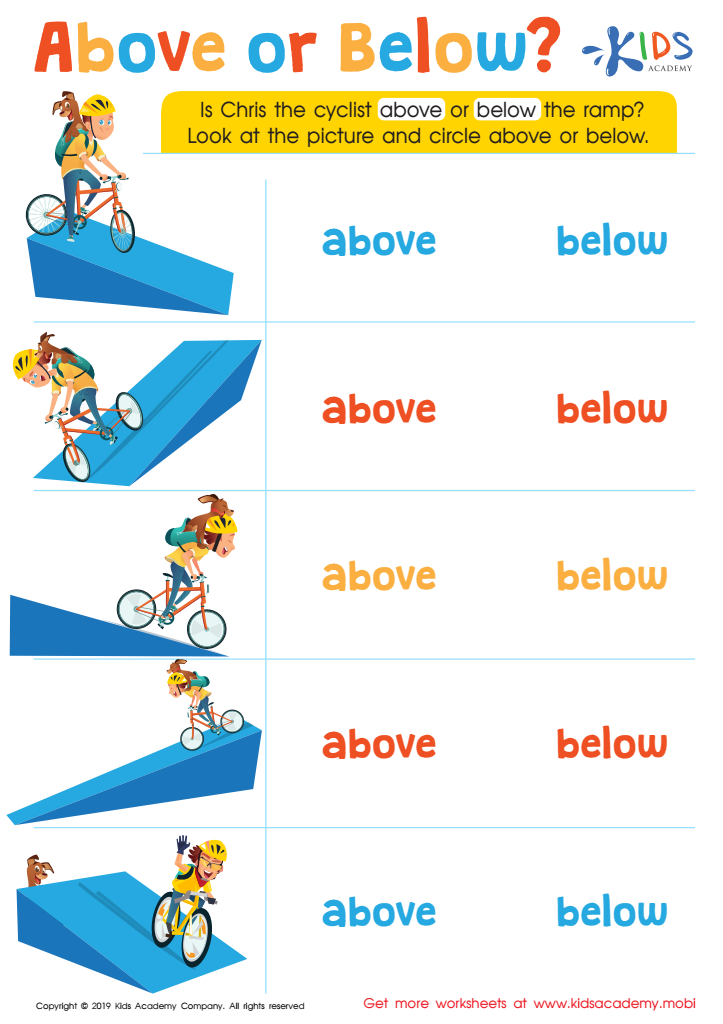

Above or Below? Worksheet
Visual perception skills are fundamental for reading development in 6-year-olds. Parents and teachers should care about these skills because they lay the foundation for reading success and overall academic achievement. Visual perception involves the brain's ability to interpret and make sense of visual information. For young readers, these skills help in recognizing letters, understanding spatial relationships, and distinguishing between similar shapes or symbols, which are essential for accurate reading and writing.
At age six, children are in their formative years of learning to read. If a child struggles with visual perception, they may find it challenging to differentiate between letters like ‘b’ and ‘d’ or may misread simple words, which can hinder their reading progress. Early identification and support can help prevent reading difficulties and boost a child's confidence and motivation in learning.
Moreover, strong visual perception skills contribute to a child's ability to pay attention, follow directions, and complete tasks independently. These skills are not only crucial for reading but also for other areas of learning, such as math and arts, making them a comprehensive skill set for academic success and overall development. Therefore, investing in activities and interventions that enhance visual perception is essential for supporting children's growth in a holistic manner.
 Assign to My Students
Assign to My Students







